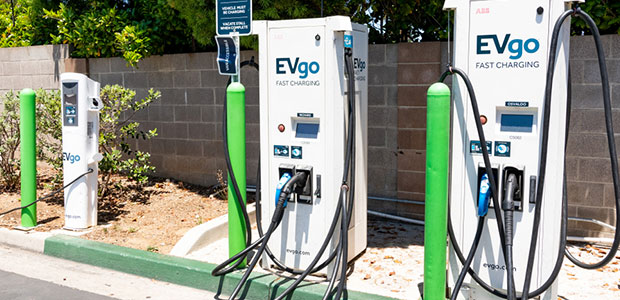
How Cities Are Adopting EVs to Urban Infrastructure
Adoption forecasts for EVs increase just about every year, and the shift is overall good news for the environment. However, it does create a new problem for city planners, who now have to find a way to rapidly upgrade EV infrastructure
- By Jenna Tsui
- Dec 11, 2019
As consumers become more aware of the environmental impact of combustion vehicles—and as more major car companies release electric vehicles of their own—more and more consumers are making the switch to electric vehicles (EVs). Adoption forecasts for EVs increase just about every year—while once analysts believed that EVs would only account for about four percent of all car sales by 2020, new forecasts predict that EVs may soon make up 10 or 11 percent of car sales.
The shift is good news for the environment. However, it does create a new problem for city planners, who now have to find a way to rapidly upgrade EV infrastructure—like charging stations—that is woefully under-prepared for the surge in EV demand.
Cities around the world are responding to this challenge in different ways, and many are building new charging stations or creatively upgrading using the infrastructure that's already in place.
Why EVs Pose Such a Challenge for Major Cities
The current EV charging grid, both in America and around the world, can barely meet the current level of EVs on the road. Some studies have found that even in cities that promote the use and purchase of EVs, and pass other measures designed to fight climate change, there aren't enough EV charging points to meet demand.
With the recent surge of demand, new charging stations will need to be added, which may pose a major headache for city planners.
Adding new infrastructure is tough in any major city. Population is dense, land is at a premium, and new development will often mean costly construction. In a worst-case scenario, new construction can even displace residents or businesses. This problem is further complicated by the fact that not all EVs accept the same plugs, meaning that charging stations may need to be wired to handle two, three, or even more different plug types if they want to support the fastest possible charging speeds.
This doesn't make adding new infrastructure impossible—but it does mean that in cities that are particularly dense or where construction costs are higher, new, creative solutions may be necessary.
How Cities are Building Infrastructure That Can Support EVs
Some cities are opting for a legislative route, like San Francisco, which is requiring by law that 10 percent of all new parking spaces in lots and garages to include circuits that can support EV charging stations. The city is also mandating that electrical infrastructure be powerful enough to charge up to 20 percent of those spaces.
While that strategy may work well in America where parking dominates major cities, people are more spread out, and development is typically cheaper, this answer may not work universally.
Attempts to legislate new EV charging stations elsewhere have created conflict. ln Finland, a bill that would require new residential development to be designed to make the installation of new EV charging stations easier opened a rift between two member parties of the coalition government.
These arguments against EV infrastructure are often bolstered by the ways in which EVs aren’t completely environmentally friendly.
For example, there’s always a carbon cost to manufacturing new vehicles, and some estimates have even found that EV production may be more carbon-intensive than the production of combustion vehicles. Also, while charging stations powered by green energy can significantly reduce emissions, that’s not always the case. If an EV charging station is powered by a coal-fired power station, it is immediately less clear by how much you’re actually reducing your carbon footprint.
There are other concerns about the EV manufacturing process, too, like the extraction of rare materials—lithium and cobalt, among others—that are essential for EV batteries. In many cases, these materials aren’t coming from sources that are environmentally friendly or ethical.
All of these issues mean that city planners who want better EV infrastructure face a steeper challenge.
While some cities may be able to develop the way out of this problem, other city planners have realized that they may need to innovate.
Some major cities are adapting existing infrastructure to support EVs. London, for example, had added more than 1000 charging points to lamp posts around the city. The installation of these points using this method is quicker, cheaper, and less disruptive than building and wiring a charging point from scratch.
The new charging stations do, however, charge EVs slower than most stations.
Other plans are even more innovative—like the EV-charging roads being developed by startup ElectRoad. Current technology is being designed to power electric buses, but it may be applied to consumer EVs in the future.
Building the Infrastructure of a Green Future
The rapid adoption of electric vehicles is good news for the environment and may be a sign that consumers are more aware of the environmental impacts their choices have. However, at the same time, the shift to EVs has created a serious new problem for cities around the world.
Because of the electrical infrastructure needed to support EV charging stations, there are no great ways to incorporate these stations into existing infrastructure. Instead, cities are turning to creative solutions or preparing themselves to develop in such a way that there will be support for EVs. The development of EV infrastructure will likely need to ramp up in the future—but charging station demand may also be offset somewhat by new technologies like EV-charging roads.
About the Author
Jenna Tsui is a Texan journalist who co-owns The Byte Beat blog. She writes about the latest news in sustainability, culture, technology and more. Check out her work on TBB or follow her on Twitter @jenna_tsui .